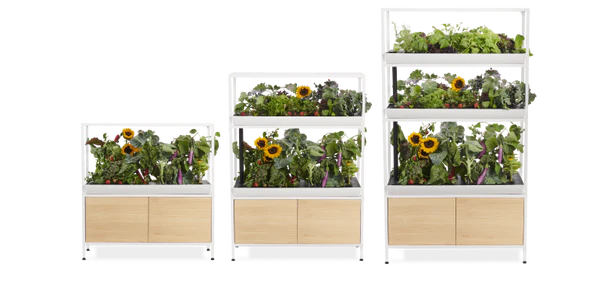
- 1. Origins
- Romaine lettuce, scientifically known as Lactuca sativa var. longifolia, is a leafy green vegetable that has a long history of cultivation. Its origins can be traced back to the Mediterranean region, specifically the area of present-day Greece and Turkey. It is believed that romaine lettuce was cultivated by the ancient Egyptians as early as 4,500 years ago. The plant's name "romaine" is derived from the Roman Empire, where it gained popularity and was widely consumed.
-
2. Growing Tips and Tricks for Romaine Lettuces
Growing romaine lettuces can be a rewarding experience, especially when using Rise Systems. Here are some tips and tricks to help you cultivate this leafy green in a controlled indoor environment:
Water
Maintain a stable pH level between 5.5 and 6.5 in your hydroponic solution. Use a pH meter or test kit to monitor and adjust the pH as needed to ensure optimal nutrient absorption by the lettuce plants.
Light
Provide adequate lighting for your romaine lettuces. LED grow lights are highly recommended for indoor hydroponic cultivation. Aim for a light cycle of 14-16 hours per day to promote healthy growth.
Air
Ensure proper air circulation within your indoor growing space. Use fans or ventilation systems to maintain a gentle breeze around the lettuce plants, which helps strengthen the stems and prevents the development of mold or diseases.
Maintain the ideal temperature and humidity levels for romaine lettuce growth. Aim for a temperature range of 65-75 degrees Fahrenheit (18-24 degrees Celsius) during the day and slightly lower at night. Relative humidity should be around 60-70%.
Nutrients
Monitor the nutrient levels in your hydroponic solution and adjust them according to the specific needs of romaine lettuce. Follow the manufacturer's instructions for the appropriate nutrient ratios and concentrations.
Pest Management
Regularly inspect your romaine lettuce plants for any signs of pests or diseases. Since hydroponic systems minimize soil-borne pests, focus on potential issues related to water quality, nutrient deficiencies, or pests that can enter the system through openings or vents.
Harvest romaine lettuce leaves when they reach the desired size and are firm and crisp. Cut the outer leaves first, allowing the inner leaves to continue growing for a continuous harvest.
-
3. Plant Characteristics and Benefits
Romaine lettuce belongs to the lettuce family, Asteraceae, and it is characterized by its elongated, sturdy leaves and crisp texture. It is a nutritious vegetable, rich in vitamins and minerals. Romaine lettuce is an excellent source of Vitamin A, Vitamin K, folate, and fiber. It also contains antioxidants that help protect the body against oxidative stress and inflammation.
Due to its high water content and low calorie count, romaine lettuce is often recommended as part of a healthy diet. It promotes hydration and can contribute to weight management. Additionally, the fiber in romaine lettuce supports digestive health and may help reduce the risk of certain chronic diseases.
-
4. Use
Romaine lettuce is a versatile ingredient that can be used in various culinary preparations. Its crisp texture and slightly bitter taste make it a popular choice for salads, especially Caesar salads, where the sturdy leaves can hold rich dressings and toppings. Romaine lettuce leaves are also commonly used as lettuce wraps, providing a nutritious and low-carb alternative to traditional wraps or taco shells.
Beyond salads, romaine lettuce can be grilled, roasted, or used in stir-fries to add a delightful crunch and freshness. It can be blended into smoothies or juiced for a nutrient-packed green drink. Romaine lettuce leaves can even be used as a substitute for tortillas in wraps and sandwiches.
In conclusion, romaine lettuce is not just a simple salad ingredient but a versatile and nutritious leafy green with a fascinating history. Whether you grow it in your garden or incorporate it into your meals, romaine lettuce offers a range of health benefits and culinary possibilities. Explore its potential and enjoy the vibrant flavors and textures it brings to your plate.




